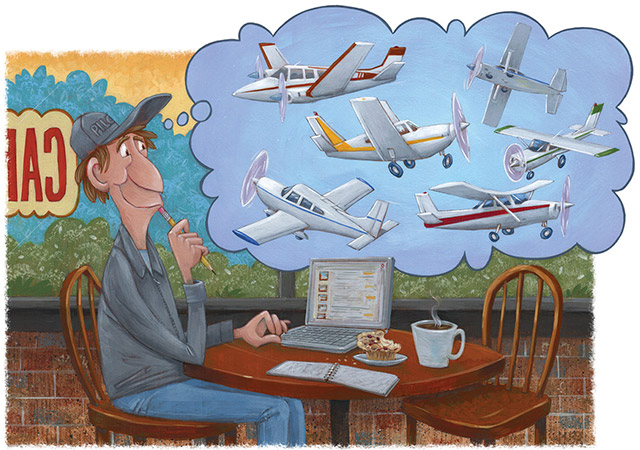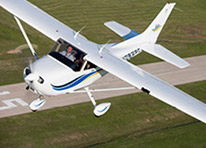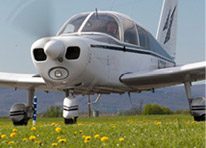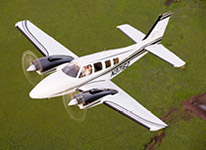What can you get for $30,000? $50,000? Twin?
Buying anything is a compromise, whether it’s a car, camera, or airplane. Let’s say the right aircraft for your mission is a Beechcraft Skipper two-seater. The problem is there weren’t any available at the time this was written—at least, not on Trade-A-Plane.com, Barnstormers.com, Controller.com, or eBay’s aircraft category.
The Baron may stretch a $100,000 budget, so if price is the top consideration for twins, go for the Piper Aztec. Trade-A-Plane advertises a 1977 Aztec for $97,000 with mid-time engines, top overhauls, heated props, deicing boots, and a Garmin stack of radios providing data to an Aspen primary flight display. There’s an auto-pilot as well, but no compliance with ADS-B. You also are spending less and keeping most of the speed.
The speedy Mooney got several mentions from forum members, and there were eight older Mooney models available for $45,000 to $50,000 on the day this was written. You gain 30 knots of additional speed but you get a less roomy cabin than a 172 or Archer, and the Mooney is not kind to long-legged backseat passengers.
Another forum member suggested the Piper Tri-Pacer, calling it “a heck of a lot more airplane than a hogged-out 150.” There were indeed five Tri-Pacers in the low- to mid-$20,000s for sale, so your chances are good for actually getting one. Many were less than $20,000, but for this article we’re giving you a budget of $30,000—just don’t try to collect it. “Hogged out” may become an important new term in airplane shopping.
Why not go for a 180-horsepower Cessna 172? another member asked. Here’s why: Three were priced just less than $50,000, but most were $60,000 to $80,000.
Another member revealed what he called the “best-kept secret in America”: the Socata Rallye 150 four-seater with its sliding canopy that can be opened in flight. It has a cruise speed of 134 mph (116 knots true airspeed) and sells for less than $30,000. There were none for sale on the day I checked, and only 10 registered in the United States, meaning unrequited buyers.
What research for this article revealed is that buyers think single-engine airplanes are less expensive than they are, while twins are less expensive than is commonly thought. I expected to find lots of Cessna 182s for less than $50,000. In fact there were eight, but they were outnumbered by the 172s.
As might be expected, there were 14 ads for Cessna 150 and 152 aircraft in the $20,000 to $30,000 range, and dozens more for less than $20,000.
Most buyers hold out for the aircraft they really want, such as the buyer in Ohio who hopes to purchase a hard-to-find Beechcraft Skipper because his club members are too big to get into a Cessna 152. Here’s one way to shorten the wait: Look up registered owners of the aircraft you want and phone them. It will take detective work to come up with the number. If they are not ready to sell, maybe they know someone who is, and has a quality aircraft. Good luck.
Email [email protected]
Illustration by John Sauer
Stripped down or hogged out?
What sort of airplane do you get for the money in each of the price categories? Is there just a divining rod to tell you when you are over water, or a Starship panel humming with a couple of terabytes of navigation wizardry? Here is what you might expect.
The $50,000 asking price for a Cessna 172 usually includes basic avionics, although you could get lucky and find one with a lower-end GPS. An autopilot is a strong possibility, but not an ADS-B Out-compliant transponder.
At $40,000, it isn’t uncommon to find a Piper 140 with a Garmin 430 GPS navigation and communication radio, an autopilot, and even a glideslope receiver. But you’ll need to comply with the new requirement for ADS-B reporting on your dime.
As for that $100,000, maybe $120,000 Beechcraft Baron, looking at what is actually for sale in Trade-A-Plane, you have a 60-percent chance of finding one with a Garmin 530 navigation and communications radio, an autopilot linked to the navigation radio for automated approaches, and weather-reporting avionics such as a Stormscope. Like the others, you’ll not find one that complies with the requirement for ADS-B.
You won’t be flying high on the hog—maybe just midway—but even at that lower price point you still get all the bacon and spareribs, and half the ham.—AKM
137,655: Number of active U.S. certified piston-engine airplanes in 2013, according to the latest General Aviation Manufacturers Association statistics.

Related Articles
What do you do? To borrow from a once-popular song, if you can’t have the one you love, then love the one you can get. We set out to find the “best” airplane for under $30,000, under $50,000, and the best twin as well—but with a twist: Only ones readily available on the used market could be included in the search.
Ads for the Cessna 150 and 152 and Piper Cherokee 140 were most numerous in the $30,000 category; the four-seat Cessna 172 and Piper Cherokee 180 led the $50,000 category; and the six-seat Piper Seneca II and Beechcraft Baron led the twin category. Then, participants on the AOPA Online member forum “I Was Wondering” were asked to vote for a winner. Forced into a corner, the forum members chose the Piper Cherokee 140, the Cessna 172, and, enthusiastically, the Baron.
The 172s generally were in the mid to upper $40,000s for 1970s models, while the Cherokee 140s were in the upper $20,000s for models made in the early to mid-1970s. You can add in the sales tax to those prices and still not exceed the category’s price limit. One forum member pointed out another added cost: Most likely the aircraft you purchase will not be equipped with Automatic Dependent Surveillance-Broadcast Out equipment, mandated by the FAA beginning January 1, 2020, to operate in most airspace where a transponder is required today.
As for twins, it might be wise to start with $120,000 if you want to end up with a mid-1970s Baron. There were a few Barons offered for less than $100,000 that were built in the early to mid-1960s. One member pointed out that you need a bit of luck when buying used. Asking prices are commonly higher than the actual price paid.
As with any pilot group, there were, let’s say, exceptions among the forum members. One member suggested it’s “silly” to claim an airplane is “best” in a price category and instead suggested looking for the best in a “function” category such as these: burger hunting, pattern hopping, family trips, business, classic, aerobatic, homebuilt, long-distance travel for two, mountain flying, Light Sport aircraft, seaplane, and time building. All good ideas. He warned it is possible to get too budget-conscious and end up with an airplane that lacks things you’re used to, such as an autopilot or updated radios. Be aware that glass cockpits will drastically increase any used aircraft’s price.
So let’s take the member’s suggestion and look at function factor. Yes, the Cessna 172 “won” the beauty contest in the $50,000 category, but a Piper Archer may be 10 knots faster. If you need speed and hauling capacity, then a 182 may be a better choice, and don’t overlook an older Maule for short fields and backcountry airstrips. Advertised for $50,000 currently is a Maule M–5-220 with a Franklin engine, long-range tanks, and a useful load of 900 pounds and 660 pounds of payload with standard fuel. It can speed along at 125 knots.
While the Piper 140 was declared a winner in the $30,000 category, a Cheetah (now owned by True Flight Aerospace) looks cooler and goes faster. The Piper 140 and Cheetah have the same basic engine, and operating costs compare favorably. The 140 can’t compete, however, with the visibility from a Cheetah.
Why a used
Cessna 172?
- Can find maintenance anywhere.
- Easy to fly.
- In demand when you want to sell.
Why a used
Piper Cherokee 140?
- At $30,000 they usually are well equipped.
- Insurance companies aren’t afraid of them.
- Economical.
Why a used
Beechcraft Baron?
- Promises 180 knots and looks cool.
- New ones are $1 million plus, but you go the same speed.
- Twin prices are currently depressed.






